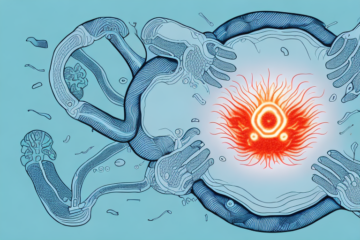Fibromyalgia is a chronic disorder that affects millions of people worldwide. It is characterized by widespread pain throughout the body, along with fatigue and tenderness in specific areas. Despite being a common health issue, fibromyalgia is not yet fully understood, and there is no cure for it. However, with proper management and treatment, patients can lead productive and fulfilling lives. In this article, we will explore everything you need to know about fibromyalgia: its causes, symptoms, diagnosis, treatment options, and more.
Understanding Fibromyalgia: Causes, Symptoms, and Diagnosis
The underlying cause of fibromyalgia is still unknown. However, researchers and healthcare professionals believe that it may be triggered by a combination of genetic, environmental, and psychological factors. Some common risk factors for fibromyalgia include genetics, infections, trauma, and stress.
The most common symptom of fibromyalgia is widespread pain that lasts for at least three months. The pain can occur in various parts of the body, including the neck, back, hips, and shoulders. Other common symptoms include fatigue, sleep disturbances, headaches, and irritable bowel syndrome.
Diagnosing fibromyalgia can be challenging, as there are no specific diagnostic tests. Healthcare providers rely on a combination of patient history, physical examination, and symptom assessments to make a diagnosis. The American College of Rheumatology has developed diagnostic criteria for fibromyalgia, which include widespread pain and the presence of specific tender points in the body.
While there is no cure for fibromyalgia, there are various treatment options available to manage symptoms and improve quality of life. These may include medications such as pain relievers, antidepressants, and anti-seizure drugs, as well as physical therapy, exercise, and stress management techniques. It is important for individuals with fibromyalgia to work closely with their healthcare providers to develop a personalized treatment plan that addresses their specific needs and goals.
Debunking Common Myths about Fibromyalgia
Despite being a widespread health condition, there are still many myths and misconceptions surrounding fibromyalgia. One common myth is that fibromyalgia is not a real condition and is simply a way for patients to seek attention or avoid work. This is entirely false. Fibromyalgia is a real, chronic disorder that can significantly impact a patient’s quality of life.
Another common myth is that fibromyalgia only affects women. This is also false. Although fibromyalgia is more commonly diagnosed in women, men and children can also develop this condition.
It is essential to debunk these myths to raise awareness about fibromyalgia and minimize the stigma that patients may face.
One of the most challenging aspects of fibromyalgia is that it is often an invisible illness. Patients may look healthy on the outside, but they are experiencing chronic pain, fatigue, and other symptoms that can be debilitating. This can lead to misunderstandings and skepticism from others, which can be frustrating and isolating for patients.
Another myth about fibromyalgia is that there is no effective treatment available. While there is no cure for fibromyalgia, there are many treatment options that can help manage symptoms and improve quality of life. These may include medications, physical therapy, counseling, and lifestyle changes such as exercise and stress management.
How to Manage Fibromyalgia Flare-ups: Tips and Strategies
Fibromyalgia flare-ups can be triggered by various factors, including stress, weather changes, and overexertion. Managing these flare-ups requires a combination of medication, lifestyle changes, and self-care strategies.
Some effective strategies for managing fibromyalgia flares include pacing activities, getting enough rest, and practicing stress-reduction techniques like mindfulness or meditation. Patients may also benefit from avoiding triggers like caffeine, alcohol, and processed foods.
In addition to these strategies, some patients find relief from alternative therapies such as acupuncture, massage, or chiropractic care. It’s important to work with a healthcare provider to determine the best course of treatment for managing fibromyalgia flare-ups. Additionally, joining a support group or seeking counseling can provide emotional support and help patients cope with the challenges of living with fibromyalgia.
Fibromyalgia Treatment Options: Medications, Therapy, and Lifestyle Changes
Although there is no cure for fibromyalgia, several treatment options can help manage the symptoms and improve a patient’s quality of life. Medications like pain relievers, antidepressants, and anticonvulsants can help alleviate pain, improve sleep, and reduce anxiety.
Therapies like cognitive-behavioral therapy (CBT), massage, and physical therapy can help patients learn coping strategies and improve their physical function. Lifestyle changes, such as regular exercise, healthy eating, and stress management, can also help improve symptoms and prevent flare-ups.
It is important for patients with fibromyalgia to work closely with their healthcare provider to develop a personalized treatment plan. This may involve a combination of medications, therapies, and lifestyle changes. Additionally, support groups and counseling can provide emotional support and help patients connect with others who are also living with fibromyalgia. With the right treatment plan and support, many patients are able to manage their symptoms and lead fulfilling lives.
The Link between Fibromyalgia and Chronic Fatigue Syndrome
Chronic fatigue syndrome (CFS) is another chronic disorder that shares many similarities with fibromyalgia, including fatigue, pain, and sleep disturbances. In fact, some healthcare professionals believe that fibromyalgia and CFS are two manifestations of the same underlying condition.
Although the relationship between fibromyalgia and CFS is not fully understood, many patients with fibromyalgia also experience symptoms of CFS, and vice versa. This overlap underscores the importance of a comprehensive evaluation and diagnosis for any patient experiencing chronic pain and fatigue.
Research has shown that both fibromyalgia and CFS are more common in women than in men. In addition, both conditions often develop after a traumatic event, such as a car accident or a viral infection. This has led some experts to suggest that there may be a link between these conditions and the body’s response to stress and trauma.
Treatment for fibromyalgia and CFS often involves a combination of medication, lifestyle changes, and alternative therapies such as acupuncture and massage. However, because the underlying causes of these conditions are not fully understood, finding an effective treatment plan can be challenging. It is important for patients to work closely with their healthcare providers to develop a personalized treatment plan that addresses their individual symptoms and needs.
Coping with Emotional Distress and Mental Health Issues with Fibromyalgia
Fibromyalgia is not just a physical condition. It can also take a toll on a patient’s emotional well-being. Patients with fibromyalgia may be at increased risk for anxiety, depression, and other mental health issues.
Coping with these emotional challenges can be just as important as managing physical symptoms. Patients may benefit from therapy or support groups, which provide a safe space for expressing their feelings and learning coping strategies.
It is important for patients with fibromyalgia to understand that their emotional distress is a common and valid experience. They should not feel ashamed or embarrassed to seek help for their mental health. In addition to therapy and support groups, patients may also benefit from practicing self-care activities such as meditation, yoga, or journaling. These activities can help reduce stress and improve overall well-being.
Natural Remedies for Fibromyalgia Pain Relief
Many patients with fibromyalgia turn to natural remedies to alleviate their symptoms. Some natural remedies that have shown promise for fibromyalgia pain relief include acupuncture, massage, and herbal supplements like turmeric or ginger.
Although there is limited scientific evidence for the effectiveness of these remedies, many patients report experiencing symptom relief with their use. However, it is essential to discuss any natural remedies with a healthcare provider before trying them to avoid potential interactions with medications or other health conditions.
In addition to these natural remedies, lifestyle changes can also help manage fibromyalgia symptoms. Regular exercise, a healthy diet, and stress management techniques like meditation or yoga can all contribute to reducing pain and improving overall well-being. It is important to work with a healthcare provider to develop a comprehensive treatment plan that includes both natural remedies and lifestyle changes for optimal fibromyalgia management.
Diet and Nutrition for Managing Fibromyalgia Symptoms
Diet and nutrition can play a significant role in managing fibromyalgia symptoms. Patients may benefit from following an anti-inflammatory diet, which emphasizes whole foods like fruits, vegetables, and lean protein.
Patients should also avoid trigger foods that can worsen symptoms, such as caffeine, alcohol, and processed foods. Some patients may benefit from taking supplements like omega-3 fatty acids, which have anti-inflammatory properties.
In addition to following an anti-inflammatory diet and avoiding trigger foods, patients with fibromyalgia may also benefit from staying hydrated. Drinking enough water can help reduce fatigue and muscle pain. It is recommended that patients aim to drink at least 8-10 glasses of water per day. Additionally, incorporating gentle exercise into a daily routine, such as yoga or walking, can also help manage symptoms and improve overall health.
Exercise and Physical Activity for Fibromyalgia Patients
Although exercise may seem counterintuitive for patients with fibromyalgia, it can actually help reduce pain and improve physical function. Patients should start with low-impact activities like swimming, cycling, or yoga and gradually increase intensity as tolerated.
It is essential to work with a healthcare provider and a physical therapist to develop an exercise plan that is safe and effective for individual patients’ needs.
In addition to reducing pain and improving physical function, exercise can also have a positive impact on mental health for fibromyalgia patients. Studies have shown that regular exercise can help reduce symptoms of depression and anxiety, which are common in patients with fibromyalgia.
It is important for patients to listen to their bodies and not push themselves too hard during exercise. Overexertion can lead to increased pain and fatigue. Patients should also incorporate rest and recovery time into their exercise plan to allow their bodies to heal and prevent injury.
Alternative Therapies for Fibromyalgia Management: Acupuncture, Massage, and Yoga
Alternative therapies like acupuncture, massage, and yoga have shown promise for managing fibromyalgia symptoms. These therapies can help improve physical function, reduce pain and fatigue, and promote relaxation.
However, it is essential to discuss these therapies with a healthcare provider before trying them, as they may not be suitable for all patients or may interact with medications.
Acupuncture involves the insertion of thin needles into specific points on the body to stimulate the nervous system and promote healing. Massage therapy can help reduce muscle tension and improve circulation, which can alleviate pain and stiffness. Yoga combines physical postures, breathing exercises, and meditation to improve flexibility, strength, and relaxation.
Living with Fibromyalgia: Tips for Maintaining Quality of Life
Fibromyalgia can be challenging to live with, but there are many ways for patients to maintain their quality of life. Patients may benefit from seeking support from family, friends, or support groups, which can provide emotional support and practical advice.
Patients should also prioritize self-care activities like getting enough rest, practicing stress reduction techniques, and engaging in activities that bring joy and fulfillment. Finally, patients should work with their healthcare provider to develop a comprehensive treatment plan that addresses their individual needs and goals.
It is important for patients with fibromyalgia to understand that their symptoms may fluctuate and that they may experience periods of remission and flare-ups. During flare-ups, patients may need to adjust their self-care activities and treatment plan to manage their symptoms effectively. Patients should also communicate openly with their healthcare provider about any changes in their symptoms or treatment plan to ensure that they receive the best possible care.
Workplace Accommodations for Employees with Fibromyalgia
Employees with fibromyalgia may face challenges in the workplace. Employers can make accommodations to help employees with fibromyalgia manage their symptoms and perform their jobs effectively.
Examples of workplace accommodations include flexible work hours, the option to work from home, and ergonomic furniture. Employers can also provide education and training for managers and coworkers to raise awareness about fibromyalgia and minimize stigma.
In conclusion, fibromyalgia is a complex and challenging condition that can significantly impact a patient’s quality of life. However, with proper management and treatment, patients can manage their symptoms and lead productive and fulfilling lives. Healthcare providers play a crucial role in diagnosing and treating fibromyalgia, but patients must also take an active role in their care by making lifestyle changes, seeking support, and developing effective coping strategies.
It is important for employers to understand that fibromyalgia is a chronic condition that can fluctuate in severity. Employees with fibromyalgia may experience good days and bad days, and their symptoms may vary from day to day. Therefore, it is essential for employers to be flexible and understanding when it comes to accommodating employees with fibromyalgia. This can include allowing for breaks during the workday, providing a quiet workspace, and offering support for mental health and emotional well-being.










